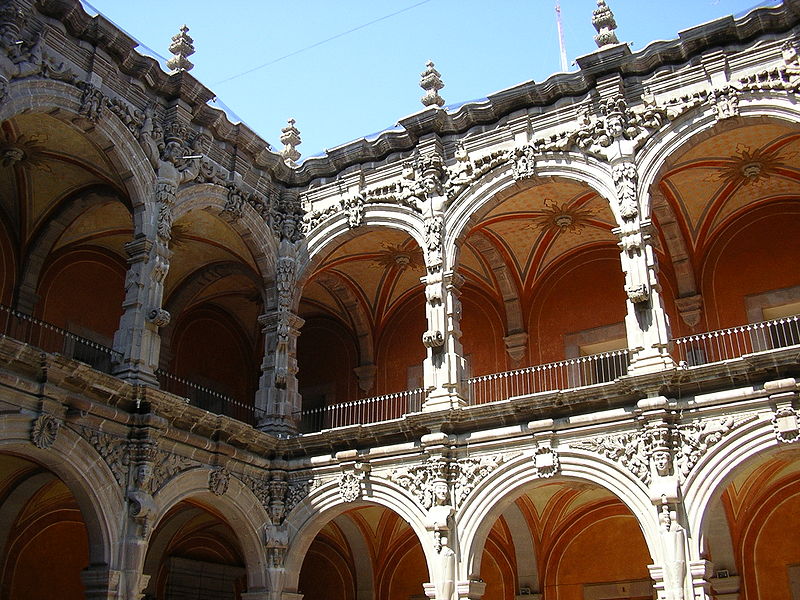Tripatini
the world's smartest travel social network
Exploring Querétaro, One of Mexico's 'Silver Cities'
by Cristóbal Ramírez
A city of nearly two million inhabitants some 200 kilometres (170 miles) from Mexico City, Santiago de Queretaro (usually known simply as Queretaro, and pronouced ke-RE-ta-ro) is one of central Mexico’s great colonial cities, but a little more under the radar to non-Mexicans than, say, San Miguel de Allende or Cuernevaca.
It’s mostly a modern place these days, but the the gridlike city centre is a UNESCO World Heritage Site, dripping history at every turn. A prime example is the Teatro República, which took its first bow in 1854 for a performance of the national anthem and in 1917 was the site of the promulgation of Mexico's constitution. These milestones were complemented by its grand Baroque manses, of which there are several, including La Casa de la Marquesa (now a luxury boutique hotel), Casa Zacatecana (where the ghosts of murdered owners are said to make appearances), Casa Corregimiento and Casa Cinco Patios (named for its five patios, where you can grab a bite to eat at La Antojería and listen to 60s, 70s and 80s music at La Viejoteca).
Be prepared to walk everywhere, and to find yourself back at the central Plaza de Armas several times over the course of your perambulations – this is the city’s nucleus, where locals stop to chat, go about their daily lives and fall in (and sometimes out of) love. It’s also worth taking a stroll through nearby Calle Cinco de Mayo and Calle Libertad, narrow, colourful alleyways lined with artisanal shops. Amongst a plethora of cool stuff, standouts here are typical local dolls made out of cardboard and fabric. Between sights and shops, Jardín Zenea and Plaza Corregidora offer benches to sit, take a load off, and do a spot of people-watching.
Speaking of sightseeing, if you’re a colonial architecture buff, you’ll find a wealth of it in more churches than you can shake a crucifix at, in all shapes and sizes. Some of the most important are the Iglesia de San Francisco (the first built here, in the 16th century), Santa Cruz (where the thorns on the trees in its patio grow in the shape of a cross), Santa Rosa de Viterbo (with a distinct Italianate influence) and Neoclassical-style Teresitas.
Then before sundown, head up one of Queretaro’s hills (either Sangremal or Las Campanas) and get a whiff a breath of fresh air surrounded by nature, with the orange-tinged sky looking almost like it’s about to fall on you. The evening brings cultural option including a rich programme at the Museum of the City, including cinema and dance performances. Afterwards, head to the Mesón de Chucho El Roto for dinner, where you’ll lick your fingers after sampling dishes like breadcrumb-covered, beef-stuffed gorditas, local-style enchiladas queretanas (in a green sauce, and served with cooked potatoes and carrots), and – for the more daring, another central/north Mexican classic, chapulines (fried grasshoppers), served as is or on soft tortillas with guacamole. Who knows, you might just like ’em – and just imagine the Facebook/Instagram moment you’ll score. ;)
Useful Facts
Querétaro has 1.8 million inhabitants in its metropolitan area.
The climate is very pleasant and moderate, with an average of 16° Celsius (61° Fahrenheit) in the winter and 25° C (77° F) in summer.
The currency is the Mexican peso.
More information: Queretaro.travel.
Best Iberia fares from the U.K., from Spain.
photos | Labé
Videos
Groups
-
India
173 members
-
Tour Operators
873 members
-
Ireland
93 members
-
South Dakota
17 members
-
Azerbaijan
17 members
-
Shopping the World
55 members
-
Tech for Travel/Hospital…
87 members
-
Andorra
26 members
-
Online Corner
75 members
-
Minnesota
22 members
-
Backpackers & Hostels
84 members
-
Portugal
60 members
-
Turks and Caicos
26 members
-
Agritourism/Farmstays
72 members
-
Zambia
21 members
© 2025 Created by EnLinea Media.
Powered by
![]()
Badges | Report an Issue | Privacy Policy | Terms of Service

You need to be a member of Tripatini to add comments!
Join Tripatini